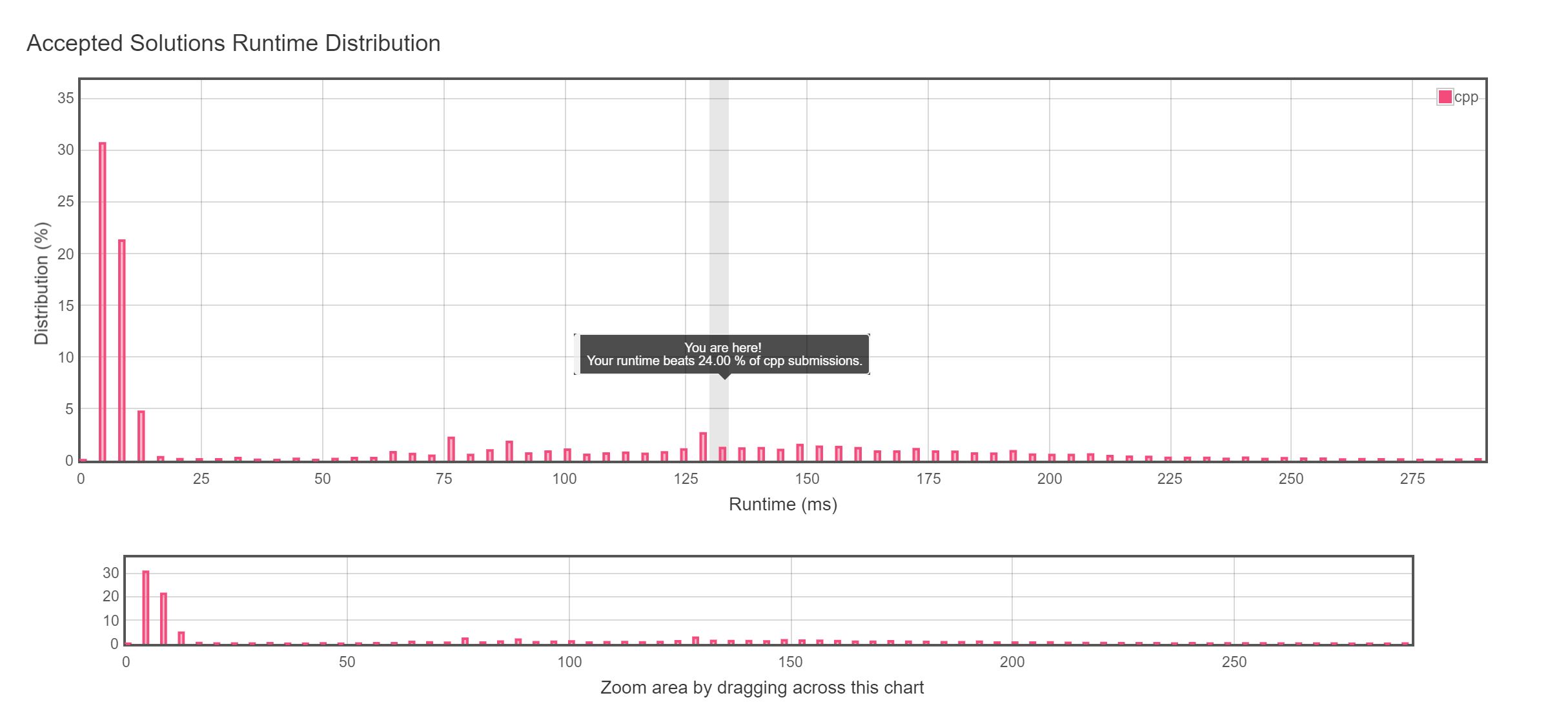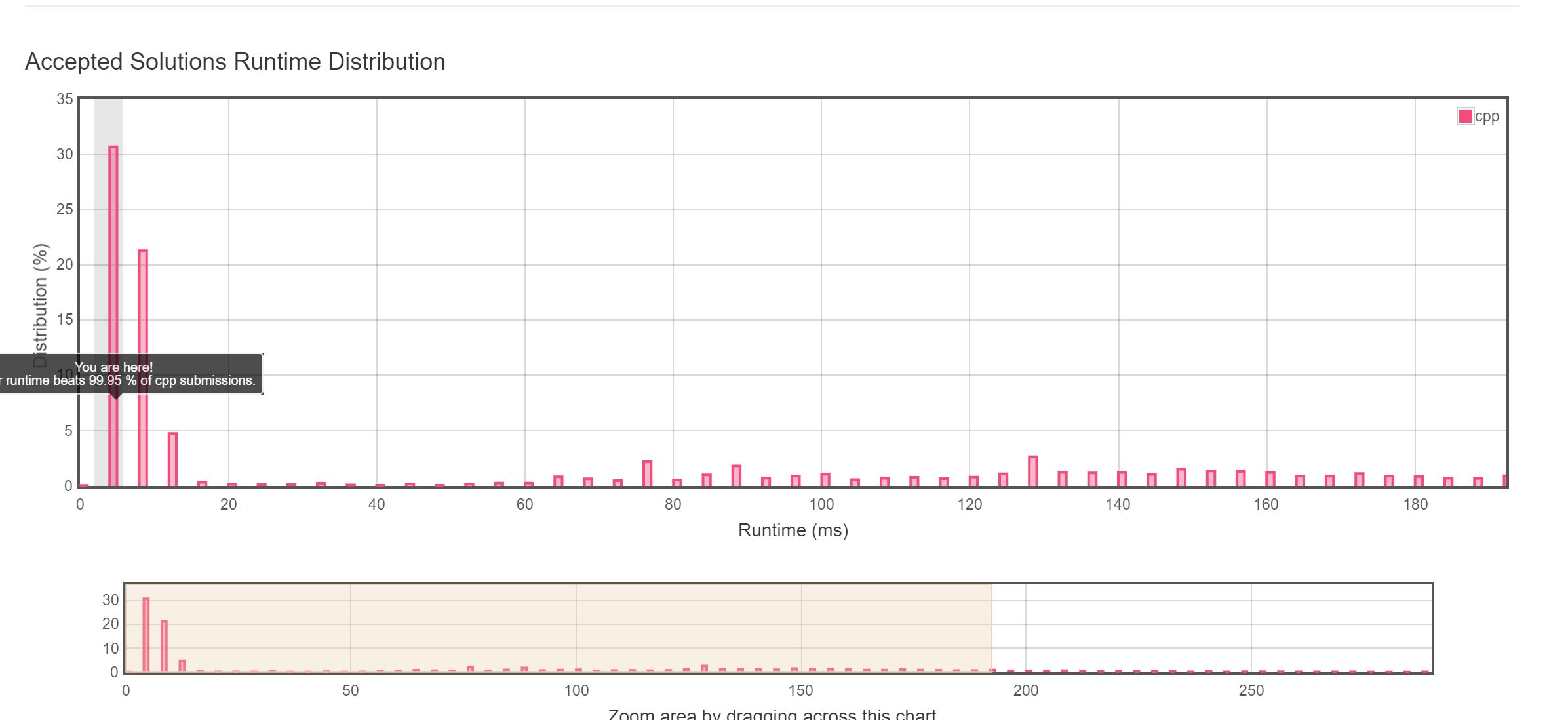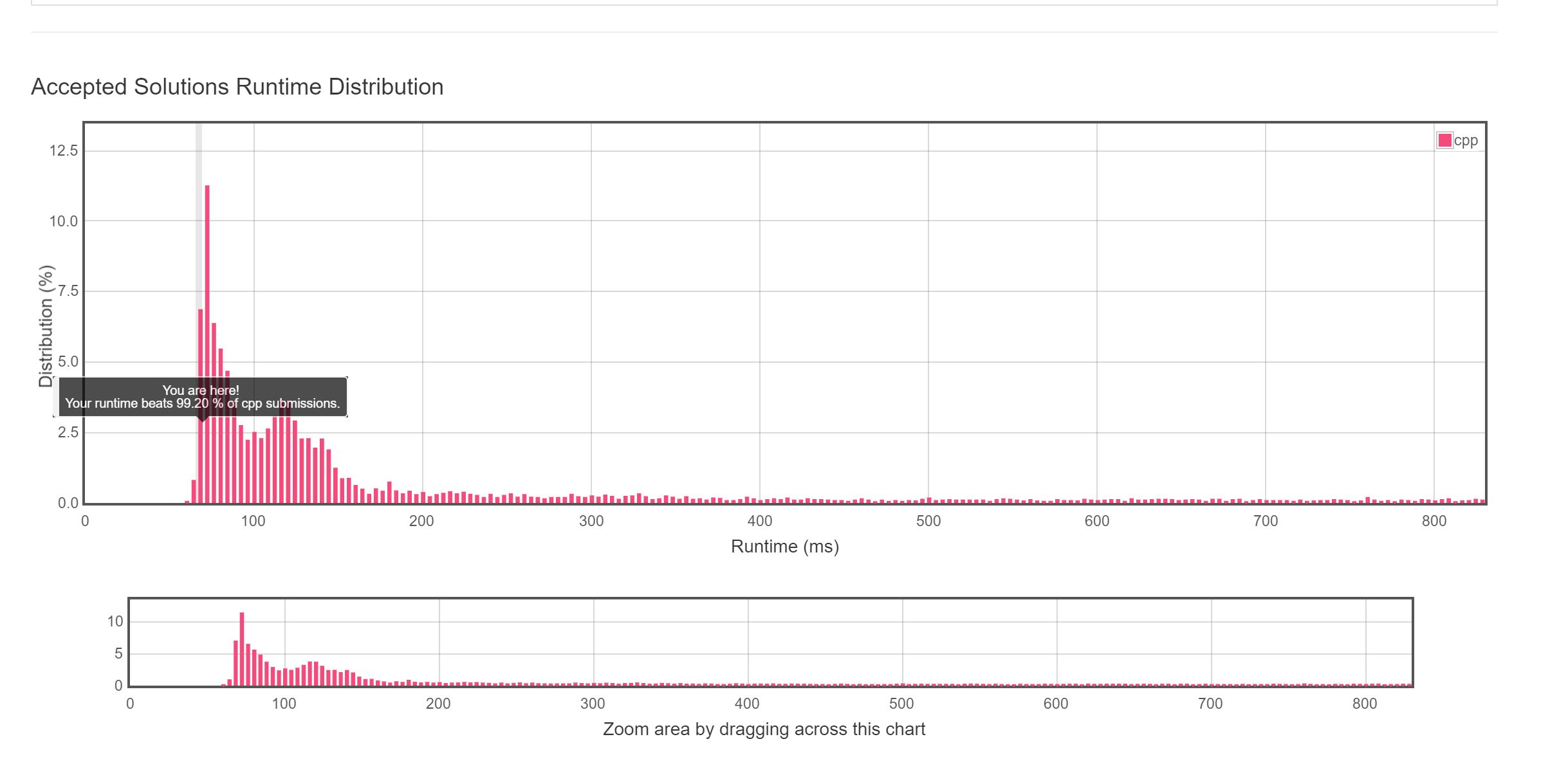Array Sum
Two Sum
Description
Given an array of integers, return indices of the two numbers such that they add up to a specific target.
You may assume that each input would have exactly one solution, and you may not use the same element twice.
Example
Given nums = [2, 7, 11, 15], target = 9,
Because nums[0] + nums[1] = 2 + 7 = 9, return [0, 1].
Analysis
给出一个数组 arr[1…n] 和一个数字 k,求数组中和为 k 的两个元素的下标。很通常的想法,我们可以通过两层循环,遍历数组中可以组合的所有数对,查询所有的情况。由于题目保证一定有解,所以,必定可以找到答案。这个算法的复杂度为 $O(n^2)$
AC Picture

Code
1 | vector<int> twoSum(vector<int>& nums, int target) { |
Further
算法运行时间太长了,比最优情况要慢一倍。我们来想办法优化算法:
题目的数组是无序的,但如果数组有序,我们可以采用双指针的方法。初始,头指针指向数组最小的元素,尾指针指向数组最大的元素。
接下来,我们计算两个指针所指元素的和 sum,并且与目标 k 进行比较。如果 sum 比 k 小,那么由于尾指针所指元素已经是最大元素,则只能移动头指针,来增大 sum;如果 sum 比 k 大,那么由于头指针指向最小元素,所以,移动尾指针,减小 sum。如果 sum 等于 k,那么找到目标。而且题目保证唯一解,所以,对于没有匹配的元素,则必定不是解。那么,双指针的算法复杂度是多少呢?由于每个元素只访问一次,所以算法复杂度为 $O(n)$。
但是我们原始数组是无序的,所以需要先排序。排序的复杂度我们可以使用快排,那么排序复杂度为 $O(nlogn)$。所以最终的算法复杂度为 $O(nlogn)$。
由于我们需要输出原始下标,所以我们还需要存储原始的下标,避免排序后无法找回原始下标。这里采用一个pair数组存储,也可以使用map。

1 | vector<int> twoSum(vector<int>& nums, int target) { |
Three Sum
Description
Given an array nums of n integers, are there elements a, b, c in nums such that a + b + c = 0? Find all unique triplets in the array which gives the sum of zero.
Note: The solution set must not contain duplicate triplets.
Example
Given array nums = [-1, 0, 1, 2, -1, -4],
A solution set is:[[-1, 0, 1],[-1, -1, 2]]
Analysis
最通常的算法,就是 $O(n^3)$ 的算法,直接三次循环。由于我们先做了 Two Sum,可以转换下想法,利用前面的算法,降低我们的算法复杂度。
首先这里只要输出数组元素,所以排序是没有关系的,算法复杂度 $O(nlogn)$。接着我们对于每一个元素 $a_i$,查找在其之后的元素中,是否存在和为 $-a_i$ 的元素对,存在即为解。这个过程使用 Two Sum 的双指针算法。那么每个元素,我们最多访问两遍,所以这里的查找解的算法复杂度为 $O(n^2)$。
NOTE: 由于数组中会有重复数组,所以,我们每找到一个解,我们需要调整双指针,直到找到非相同元素,否则,解集中将出现重复解。
AC Picture

Code
1 | vector<vector<int>> threeSum(vector<int>& nums) { |
